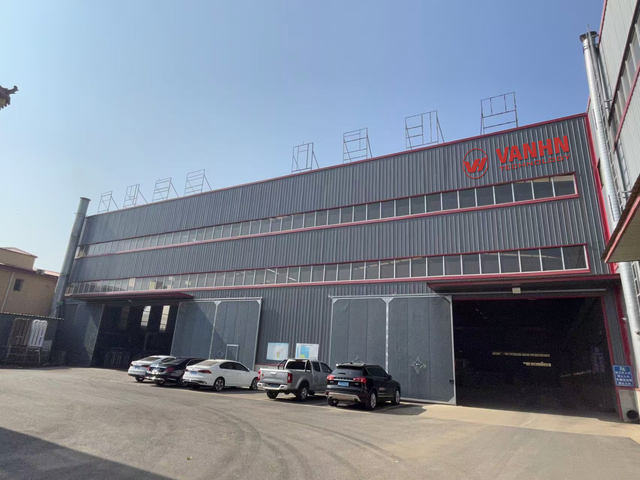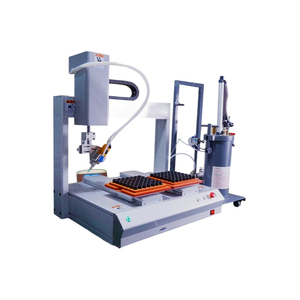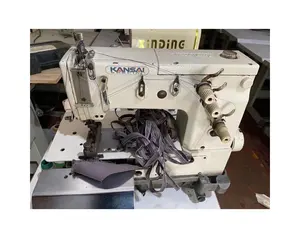Automation Used In Industries

































 CN
CN







 CN
CN





































About automation used in industries
Where to Find Suppliers for Automation Used in Industries?
China remains a central hub for the global trade of used industrial automation equipment, with key supplier clusters concentrated in Guangdong, Shandong, and Jiangsu provinces. Dongguan and Wuhan have emerged as specialized nodes for refurbished control systems and robotic integration, supported by mature after-market service ecosystems. These regions host suppliers with access to decommissioned machinery from high-tech manufacturing facilities, enabling cost-effective reconditioning and resale of automation assets.
The industrial infrastructure supports rapid refurbishment cycles through localized networks of testing labs, component recyclers, and calibration specialists. This ecosystem allows suppliers to offer pre-tested units with lead times averaging 15–25 days for standard configurations. Buyers benefit from proximity to original equipment manufacturers (OEMs), facilitating authenticity verification and spare part sourcing. Cost advantages are significant—used automation systems typically retail at 30–60% below new unit prices, with additional savings from integrated logistics in export-oriented zones like Taicang and Xiamen.
How to Choose Suppliers for Industrial Automation Equipment?
Effective supplier selection requires systematic evaluation across technical, operational, and transactional dimensions:
Technical Verification
Confirm compatibility of used equipment with existing production environments. Critical components such as PLCs, servo drives, and collaborative robot arms should be validated against original OEM specifications. Request functional test reports, including performance metrics under load conditions. For safety-critical applications, ensure compliance with IEC 61508 (functional safety) or ISO 10218 (industrial robots).
Refurbishment Standards
Assess the supplier’s reconditioning process:
- Full diagnostic reporting on mechanical wear, electrical integrity, and firmware status
- Evidence of component replacement (e.g., encoders, bearings, power supplies)
- Calibration certificates traceable to national standards
Prioritize suppliers offering post-sale technical support and remote troubleshooting capabilities, especially for complex systems like CNC-controlled dispensing machines or multi-axis cobots.
Transaction Risk Mitigation
Utilize secure payment methods with milestone-based release terms. Verify supplier track records via delivery performance data and response consistency. Analyze reorder rates—suppliers with rates below 15% may indicate limited customer satisfaction or niche positioning. Cross-reference listed online revenue with product pricing and volume to assess business scale realism.
What Are the Leading Suppliers of Used Industrial Automation Equipment?
| Company Name | Main Products | Price Range (USD) | Min. Order | On-Time Delivery | Avg. Response | Reorder Rate | Online Revenue |
|---|---|---|---|---|---|---|---|
| Dongguan Hongshang Automation Equipment Co., Ltd. | Glue Dispensing Machines, CNC Automation | $1,700–1,960 | 1 set | 100% | ≤3h | <15% | $3,000+ |
| Taicang Lingmao CNC Electromechanical Co., Ltd. | Servo Drives, CNC Modules | $50–1,100 | 1 piece/set | 100% | ≤4h | 53% | $350,000+ |
| Zhongchuang Automation Equipment (Shandong) Co., Ltd. | Collaborative Robots, Articulated Arms | $2,999–24,999 | 1 set/piece | - | ≤1h | <15% | $30,000+ |
| Wuhan Yulin Industrial Automation Co., Ltd. | PLCs, Servo Controllers, HMI Systems | $100–1,500 | 1 piece | 87% | ≤8h | <15% | $40,000+ |
| Xiamen Ruisipei Automation Equipment Co., Ltd. | PLC Control Units, Automation Modules | $750–1,500 | 1 piece | 100% | ≤11h | - | - |
Performance Analysis
Taicang Lingmao stands out with a 53% reorder rate and high annual online revenue, indicating strong market acceptance and repeat client engagement in the CNC electromechanical segment. Dongguan Hongshang and Xiamen Ruisipei demonstrate reliable on-time delivery (100%), making them suitable for time-sensitive procurement. Zhongchuang offers premium robotic systems at competitive pricing, supported by sub-one-hour response times, though absence of delivery data warrants due diligence. Wuhan Yulin provides entry-level automation components with moderate delivery reliability (87%), appropriate for low-risk pilot deployments. Buyers seeking scalability should prioritize suppliers with documented customization capabilities and proven assembly experience.
FAQs
How to verify the condition of used automation equipment?
Request detailed inspection reports including motor run hours, error log history, and firmware version. Video demonstrations of machine operation are essential. For critical systems, engage third-party inspectors to conduct on-site assessments prior to shipment.
What is the typical lead time for used automation systems?
Standard units ship within 10–20 days after order confirmation. Complex systems requiring recalibration or integration support may take 25–35 days. Air freight adds 5–7 days for international delivery; sea freight ranges from 25–45 days depending on destination.
Can suppliers provide technical documentation and software backups?
Reputable suppliers deliver original manuals, wiring diagrams, and backup configuration files. Confirm availability of ladder logic or robot programming scripts for PLCs and robotic arms. Some vendors offer optional training sessions for system commissioning.
Is customization possible with used automation equipment?
Limited modifications—such as tooling changes, software updates, or communication protocol adjustments—are commonly offered. Full hardware reconfiguration is rare; buyers should confirm modification scope before ordering. Suppliers with in-house engineering teams are more likely to support integration requests.
What are common payment terms for international orders?
Standard terms include 30% advance payment with balance before shipment. Escrow services are recommended for first-time transactions. Letters of credit (LC) are accepted by larger suppliers, particularly those with verified export histories exceeding $30,000 in annual revenue.














































































































